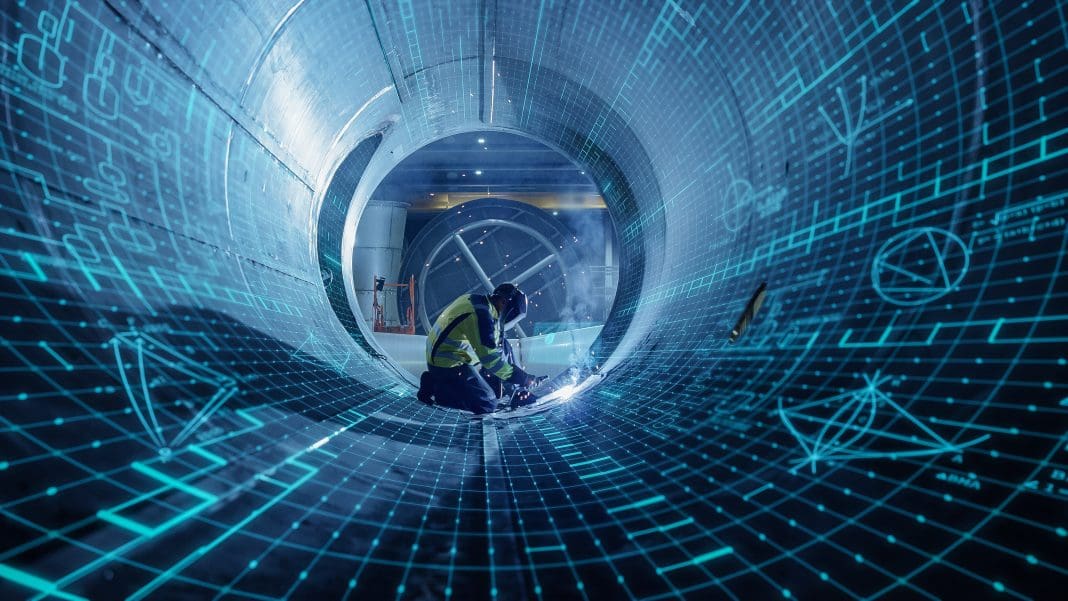Construction technology in the Middle East is being embraced by more companies, according to a new region-wide survey. Kaarin Kalavus-Collins of Turner & Townsend takes a look at the results
Although the construction industry has historically been slow to embrace digital change and innovation, it is currently undergoing a marked increase in digital adoption.
This shift is primarily driven by the pressing need for infrastructure, a shortage of skilled labour and increased stakeholder demands for transparent data and integration.
The Middle East’s rapid development necessitates efficient construction methods, with digital transformation initiatives and government mandates requiring widespread use of digital tools for timely and budget-effective project delivery. The opportunity to drive better performance through digital tools is becoming clear across the region.
Our recent Middle East digital construction market intelligence report explores the industry’s transition to the digital age and highlights key technologies transforming project delivery including digital twins, drone technology and AI data analytics.
BIM: The backbone of digital twin
Digital twins are expected to revolutionise construction by providing detailed models that aid decision making.
They can be used as a tool to support strong ESG credentials for programmes – reducing carbon emissions and promoting environmental wellbeing, especially in countries like the UAE and KSA, where population growth is expected to accelerate.
Building Information Modelling (BIM) is a key facilitator for building digital counterparts of physical assets, optimising clash detection during design and construction.
78% of respondents to a survey we undertook for our report actively use BIM on their projects, making it the highest-scoring digital application.
Successful BIM processes help teams define project visions and objectives before design or construction, providing real-time insights for development and adaptation. Forward-thinking business leaders must now expand BIM outputs beyond design and construction.
Instead, digital twins must be deployed to enhance collaborative data models in operational initiatives.
Construction technology in the Middle East: The rise of drones
The application of software tools like BIM can go hand-in-hand with robotics. Drones have proven to be extremely valuable tools in construction projects, offering a unique perspective that assists with planning, progress tracking and surveying.
The use of drones provides many advantages, such as enhanced safety, efficient data collection and better project management.
The survey feedback indicates that drone technology can offer real-time progress updates, aiding contractors and stakeholders in managing multiple sites, while site engineers find planning and progress reporting monotonous and time-consuming.
However, in the Middle East in particular, it is important to acknowledge and address any regulatory obstacles and privacy issues that may arise, especially in populated areas.
Furthermore, drone technology capability, affordability, and adoption are improving in the region, but drone cost, rules and regulations of flight, skilled operators, and flight times still have to be addressed.
While global numbers indicate significant growth and rapid expansion in the drone market, just 18% of our Middle Eastern survey respondents said they had witnessed the use of drones on their construction projects. This suggests that the use of drones is still in its infancy in the region and their application has yet to reach mainstream projects, providing a golden opportunity for increased future uptake.
Integration of AI in data analysis
The incorporation of AI in data analysis is set to transform the worldwide construction sector.
According to a report published by the UAE’s Ministry of Energy & Infrastructure, some of the key benefits of using AI in construction include preventing cost overruns, better design of buildings through generative design, risk mitigation, heightened safety, addressing labour shortages and offsite construction (where offsite factories will be staffed by autonomous robotics).
Regionally developed AI powered solutions like BuildStream, WakeCap and Safety.ai, – httpsare already helping projects in the Middle East become more streamlined and productive.
However, our survey findings have revealed nuanced opinions across construction professionals in the region.
While there is a notable awareness of AI concepts, the split opinion on its transformative impact highlights a cautious approach to date and a need for a clearer understanding of its benefits, including addressing a potential knowledge gap or uncertainty regarding the extent of AI’s influence.
The future of construction technology in the Middle East
The survey highlights that as the industry matures in its digital transformation journey, the future of digital construction will move away from fragmented solutions to be centred around regulation and integrated solutions that align with the full ecosystem.
It means the only way forward is smart construction.
The industry in the region will have to increase the pace of technological adoption due to government ambitions for a digitised economy. Economic growth demands and regulation will remain the key drivers for reinforcing digitisation in construction.
Following an influx of construction technology start-ups moving into the Middle Eastern market, and as the technology scene continues to mature, higher rates of adoption are expected.
Data was collected between Q4 2023 and Q1 2024, and participants included cost, project management, and design consultants, alongside architects, developers, main contractors, and government bodies across the UAE, KSA, Oman, and Qatar.














